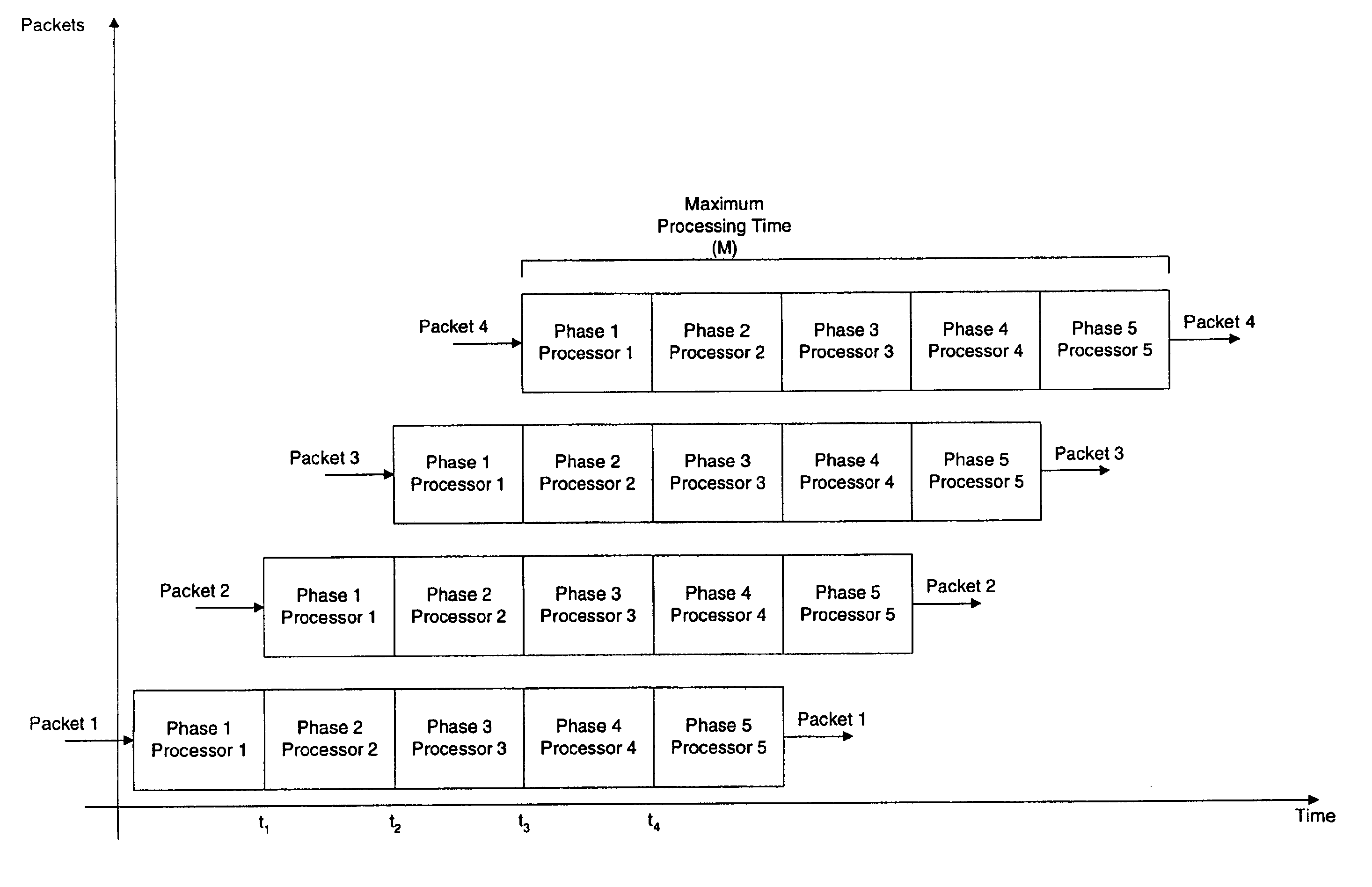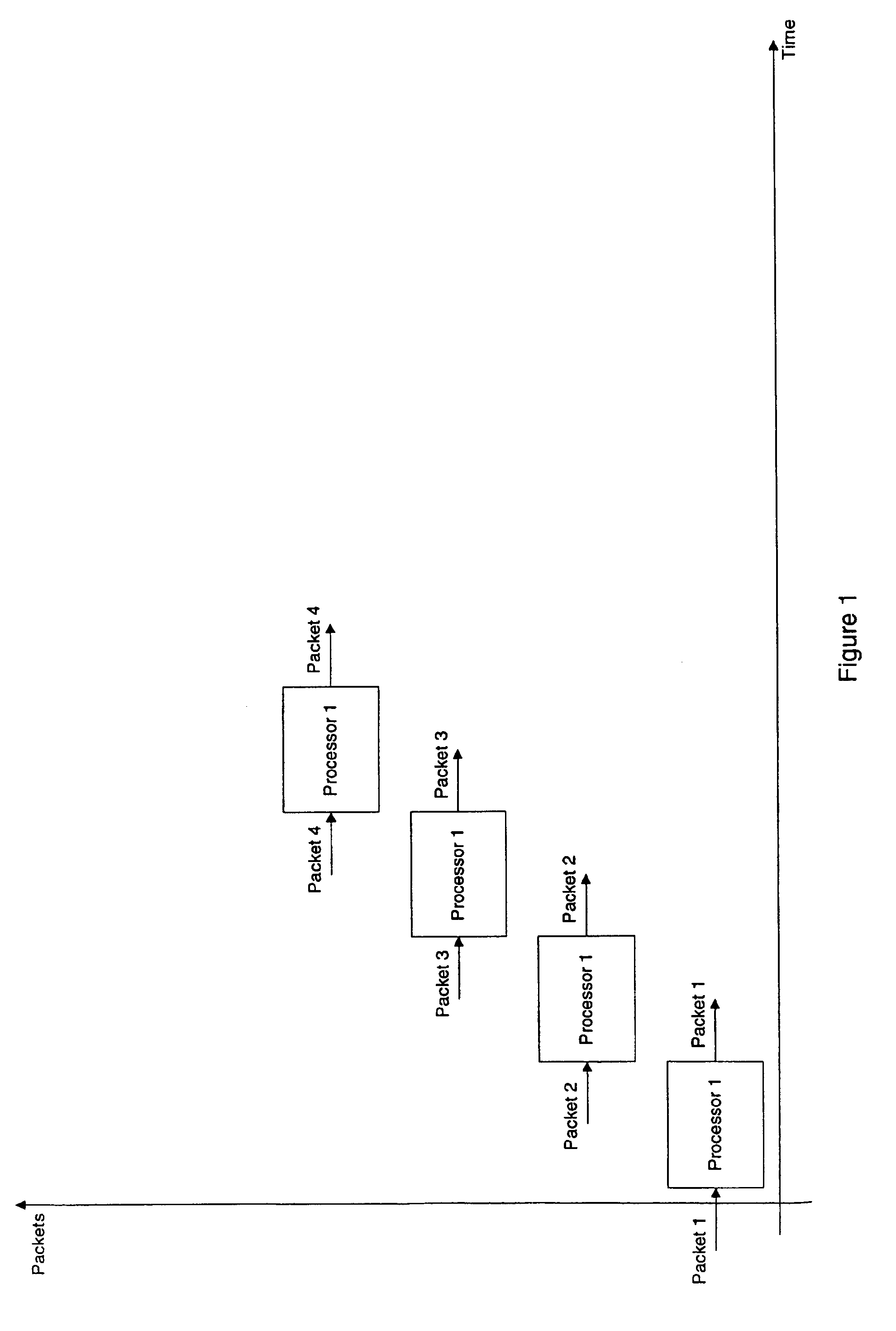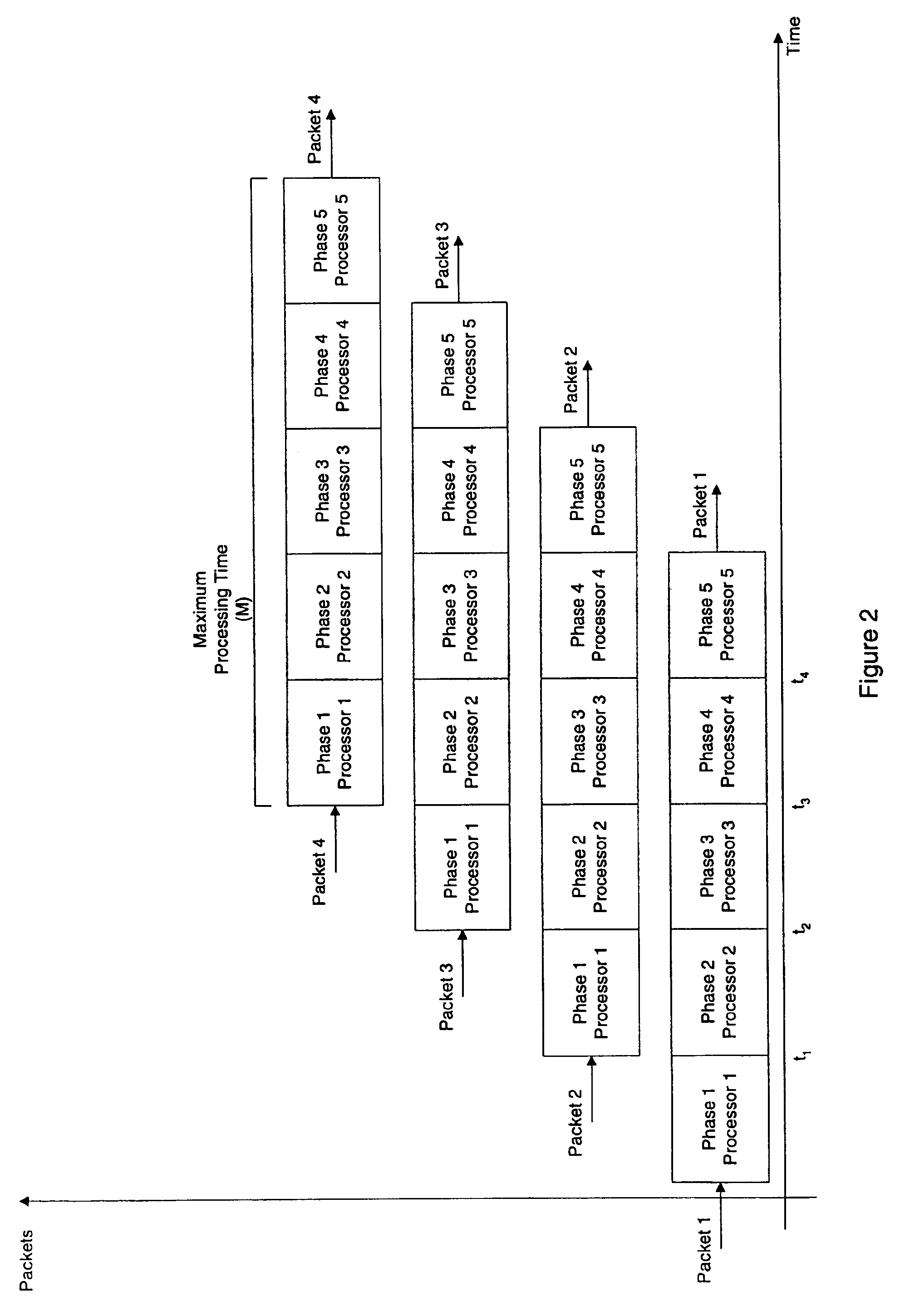Parallel network processor array
a network processor and array technology, applied in the field of parallel processing of data, can solve the problems of slow data processing speed, inability to accept internet users' delays in data processing, and inability to continue linear programs
- Summary
- Abstract
- Description
- Claims
- Application Information
AI Technical Summary
Benefits of technology
Problems solved by technology
Method used
Image
Examples
Embodiment Construction
Embodiments of the present invention now are described with reference to figures where like reference numbers indicate identical or functionally similar elements.
FIG. 3 illustrates an embodiment of the present invention where packets are processed in parallel. In this manner, the time taken for the execution of a variable time process often can have a significantly lower expected value than the maximum possible time required for a process to execute. In addition, an embodiment of the present invention can keep track of the packets within a data transmission that is transmitted from a certain source to a certain destination with specific quality of service state information attributed to it (e.g., a micro-flow) and does not permit a packet in this micro-flow to start being processed if another packet from the same micro-flow currently is being processed, as described in more detail below.
FIG. 4 illustrates a micro-flow of one embodiment of the present invention. In one embodiment, th...
PUM
 Login to View More
Login to View More Abstract
Description
Claims
Application Information
 Login to View More
Login to View More - R&D
- Intellectual Property
- Life Sciences
- Materials
- Tech Scout
- Unparalleled Data Quality
- Higher Quality Content
- 60% Fewer Hallucinations
Browse by: Latest US Patents, China's latest patents, Technical Efficacy Thesaurus, Application Domain, Technology Topic, Popular Technical Reports.
© 2025 PatSnap. All rights reserved.Legal|Privacy policy|Modern Slavery Act Transparency Statement|Sitemap|About US| Contact US: help@patsnap.com



